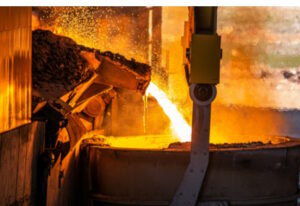For many investors, the basic materials sector doesn’t exactly stir up excitement. It’s true that stocks in this sector tend to be cyclical and volatile, and not many are steady dividend growers. But, there are gems to consider, and speculative plays to be made.
Basic materials include most natural resources used to make goods. The sector includes companies that discover, extract, develop, and process raw materials. This includes various metals (copper, gold, silver, etc.), agricultural inputs like fertilizers, lumber & wood along with paper products and specialty chemicals.
Don’t miss a thing! Subscribe to our weekly newsletter here.
Sector strengths
If you know a specific industry inside out like the needs and trends for copper, for example, you can make a lot of money. Basic materials companies’ financial health fluctuates following the demand vs. supply cycle. This sector is prone to many significant stock price movements within a comparatively short time. If you can buy industry leaders at their bottoms, you will look like a genius during the next commodity boom.
 Some companies in the chemical and specialty chemical industries offer products that are bought no matter what is happening in the economy. Companies that produce those stable products enjoy stronger pricing power, are less dependent on commodity prices, and could become good dividend growers.
Some companies in the chemical and specialty chemical industries offer products that are bought no matter what is happening in the economy. Companies that produce those stable products enjoy stronger pricing power, are less dependent on commodity prices, and could become good dividend growers.
Most materials do well in an inflationary environment. Since they operate at the start of the economic chain, they fix the price of raw materials based on demand. They are inflation creators in that process. Other businesses need basic materials to produce goods, therefore, they are willing to pay a higher price.
A word about gold
On another topic, gold is often seen as an asset class of its own. Throughout most recessions, gold (the metal) and gold companies (mining or royalties) have done very well. In general, when the market goes into full panic mode, many investors seek a place to store their money. They don’t necessarily trust currencies (or governments) and believe gold is a more reliable currency. Therefore, if you hold gold stocks, you likely see them doing nothing for several years, but then look like saviors when there’s panic in the streets. In my view, gold is a bet on fear. Over the long haul, its returns have simply matched inflation.
Sector weaknesses
The basic materials sector is short on dividend-paying companies compared to other sectors. This is explained by the highly cyclical and volatile nature of the sector. The price of many commodities fluctuates a great deal, making it very difficult for management to plan steady and increasing dividend payouts.
 On top of their cyclical nature, most basic materials companies need a lot of capital to operate. This often leaves little room for dividend growth, particularly during economic downturns. This is also why these companies are likely to cut their dividend temporarily to assist the business in weathering challenging times. Management’s goal is not to fill shareholders’ pockets with distributions, but rather to improve their production abilities and lower their cost of operations.
On top of their cyclical nature, most basic materials companies need a lot of capital to operate. This often leaves little room for dividend growth, particularly during economic downturns. This is also why these companies are likely to cut their dividend temporarily to assist the business in weathering challenging times. Management’s goal is not to fill shareholders’ pockets with distributions, but rather to improve their production abilities and lower their cost of operations.
Also, don’t get caught up in the hype of the moment. In 2020, many experts called for a long and prosperous path for gold mining stocks. They also expected several years of robust dividend increases as they became “money printing machines.” Today, the gold market is relatively quiet as the gold price is about the same as its peak price of $2,000/oz in August 2020. Gold mining stocks have not become the super-powered dividend growers projected back then.
Don’t miss a thing! Subscribe to our weekly newsletter here.
Getting the best of the basic materials sector
I’m not a big fan of the basic materials sector, or the energy sector for that matter. Both make for poor dividend growers due to their dependence on commodity prices.
 However, if you want to make speculative plays, this is one of the best sectors to play. Whenever there is a bottom, you can pick some leaders in the industry by looking at their balance sheets and ability to generate cash flow, and you can often make great trades. However, you won’t see me overly excited about any materials company.
However, if you want to make speculative plays, this is one of the best sectors to play. Whenever there is a bottom, you can pick some leaders in the industry by looking at their balance sheets and ability to generate cash flow, and you can often make great trades. However, you won’t see me overly excited about any materials company.
There are exceptions that show long dividend growth streaks, such as APD and CCL.B.TO. This indicates companies that can manage volatility and still reward shareholders.
Some companies like DOW or CCL Industries are considered “industrial or consumer” stocks, but their high dependence on commodity prices puts them in the materials sector.
Who should invest in this sector and how much?
The basic materials sector is best suited for growth investors. Due to the lack of candidates with a decent dividend growth policy, a 3% to 5% exposure is enough to add some spice to your portfolio without too many headaches.
Although the sector isn’t a favorite of mine, there are some companies in it that I like.
- U.S.: Albemarle Corp (ALB), Air Products & Chemicals Inc (APD).
- Canada: Franco Nevada (FNV.TO / FNV), Stella-Jones Inc (SJ.TO), CCL Industries (CCL.B.TO).
Looking for protection and stability in your portfolio rather than growth, explore the consumer staples sector.


Leave a Reply